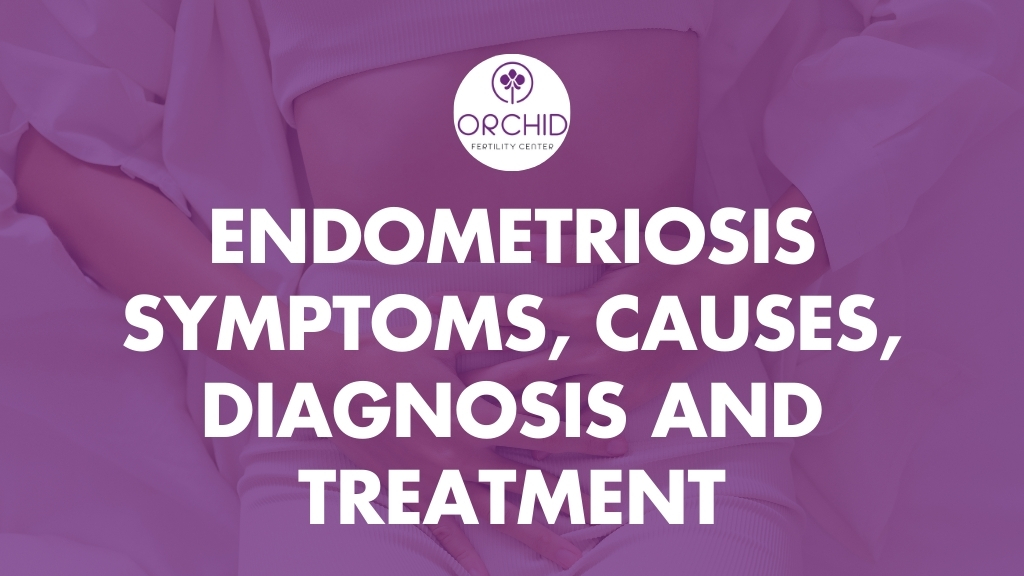Endometriosis is a common yet often misunderstood condition affecting millions of women worldwide leading to Female Infertility. Despite its prevalence, there is still a lack of awareness surrounding its symptoms, diagnosis, and treatment options.
In this guide, we will delve into what endometriosis is, its symptoms, and the available treatments, providing valuable insights based on research and medical expertise.
For Female Infertility Treatment Contact Orchid IVF Centre in Kolhapur.
Orchid IVF
202, Second Floor, Eternity Square,
opp. RTO Office
Tarabai Park, Kolhapur
Mobile No: 782 205 7245, Phone No: 231 265 7167
What is Endometriosis?
Endometriosis is a chronic condition where tissue similar to the lining of the uterus, known as the endometrium, grows outside the uterus. This tissue can be found on organs such as the ovaries, fallopian tubes, and the tissue lining the pelvis. Unlike the lining of the uterus which sheds during menstruation, the displaced tissue has no way to exit the body, leading to inflammation, pain, and the formation of scar tissue.Causes of Endometriosis
The exact cause of endometriosis is not fully understood, but several factors may contribute to its development. Here are some potential causes and risk factors associated with endometriosis:1. Retrograde Menstruation:
One theory suggests that during menstruation, some of the menstrual blood containing endometrial cells flows backward through the fallopian tubes into the pelvic cavity instead of exiting the body. These displaced cells then adhere to pelvic organs and tissues, where they continue to grow and cause endometriosis.2. Hormonal Imbalance:
Hormonal fluctuations, particularly an imbalance in estrogen and progesterone levels, may play a role in the development of endometriosis. Estrogen, in particular, stimulates the growth of endometrial tissue.3. Immune System Disorders:
Dysfunction of the immune system may prevent the body from recognizing and eliminating endometrial-like tissue that has spread to other areas outside the uterus.4. Genetic Factors:
Endometriosis tends to run in families, suggesting a genetic component to the condition. Having a close relative with endometriosis increases an individual’s risk of developing the condition.5. Environmental Factors:
Exposure to certain environmental toxins or chemicals may increase the risk of developing endometriosis. These toxins may disrupt hormone levels or immune function, contributing to the development of the condition.6. Surgical Scars:
Previous surgeries, such as cesarean sections or hysterectomies, may create scar tissue in the pelvic area, providing sites for the implantation and growth of endometrial cells.7. Other Factors:
Other factors such as menstrual cycle abnormalities, low body weight, early onset of menstruation, and never giving birth may also increase the risk of developing endometriosis. It’s important to note that while these factors may contribute to the development of endometriosis, the condition can occur in individuals without any known risk factors. Additionally, the severity of symptoms does not always correlate with the extent of the disease. Consulting with a healthcare provider can help diagnose and manage endometriosis effectively.Symptoms of Endometriosis:
1. Pelvic Pain:
- One of the hallmark symptoms of endometriosis is chronic pelvic pain that may worsen during menstruation.
- Studies indicate that up to 90% of women with endometriosis experience pelvic pain, which can range from mild discomfort to debilitating cramps.
2. Painful Periods (Dysmenorrhea):
- Women with endometriosis often report severe menstrual cramps that are not relieved by over-the-counter pain medication.
- Research suggests that dysmenorrhea affects approximately 50% to 90% of women with endometriosis.
3. Pain During Intercourse (Dyspareunia):
- Endometriosis can cause pain during sexual intercourse, also known as dyspareunia, due to inflammation and scarring around the reproductive organs.
- Studies estimate that around 40% to 60% of women with endometriosis experience pain during sex.
4. Infertility:
- Endometriosis is a leading cause of Female infertility . The presence of endometrial tissue outside the uterus can interfere with ovulation, fertilization, and implantation.
- Research suggests that up to 30% to 50% of women with endometriosis may experience Infertility.
5. Other Symptoms:
- Fatigue, gastrointestinal issues such as bloating, diarrhea, or constipation, and heavy menstrual bleeding are other common symptoms associated with endometriosis.
Diagnosis of Endometriosis :
Diagnosing endometriosis can be challenging as its symptoms often overlap with other gynecological conditions. However, several diagnostic methods can help healthcare providers confirm the presence of endometriosis:1. Medical History and Symptom Assessment:
- Your doctor will review your medical history and discuss your symptoms, including the location, duration, and severity of pain.
2. Pelvic Exam:
- During a pelvic exam, your doctor may manually palpate your abdomen and pelvis to check for any abnormalities or tenderness.
3. Imaging Tests:
- Ultrasound or magnetic resonance imaging (MRI) scans may be recommended to visualize any endometrial growths or cysts in the pelvic region.
4. Laparoscopy:
- Laparoscopy is considered the gold standard for diagnosing endometriosis. During this minimally invasive surgical procedure, a thin, lighted instrument called a laparoscope is inserted through a small incision in the abdomen to view the pelvic organs and obtain tissue samples for biopsy.
Endometriosis Treatment Options:
While there is currently no cure for endometriosis, several treatment options can help manage symptoms and improve quality of life and also provide Female Infertility Treatment:1. Pain Management:
- Over-the-counter pain relievers such as nonsteroidal anti-inflammatory drugs (NSAIDs) can help alleviate pelvic pain and menstrual cramps.
- For more severe pain, your doctor may prescribe stronger pain medications or hormone therapy to suppress menstrual cycles and reduce pain.
2. Hormonal Therapy:
- Hormonal therapies such as birth control pills, hormonal IUDs, or gonadotropin-releasing hormone (GnRH) agonists can help control symptoms by reducing the production of estrogen and suppressing the growth of endometrial tissue.
3. Surgery:
-
- In cases where symptoms are severe or fertility is affected, surgery may be recommended to remove endometrial implants, scar tissue, or cysts.
- Laparoscopic excision surgery, also known as laparoscopic deep infiltrating endometriosis (DIE) surgery, is a common approach to remove endometrial tissue while preserving the reproductive organs.
4. Female Infertility Treatment:
- For women struggling with infertility due to endometriosis, assisted reproductive technologies (ART) such as in vitro fertilization (IVF) may be recommended. IVF is an alternative treatment for Female Infertility.
For Female Infertility Treatment Contact Orchid IVF Centre in Kolhapur.
Orchid IVF
202, Second Floor, Eternity Square,
opp. RTO Office
Tarabai Park, Kolhapur
Mobile No: 782 205 7245, Phone No: 231 265 7167

